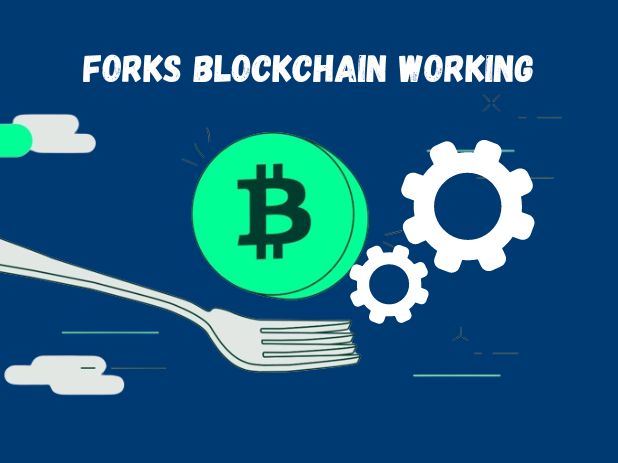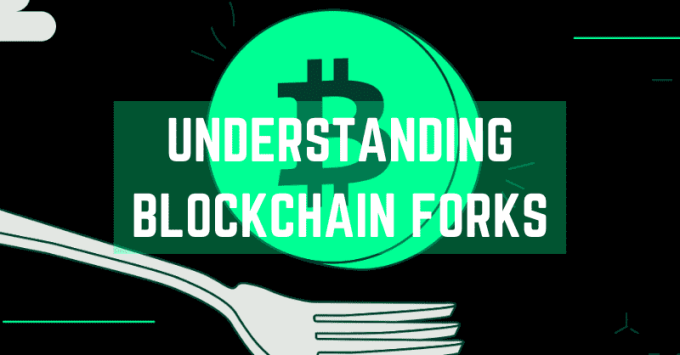A blockchain fork is a split in the blockchain network that occurs when there’s a divergence in the blockchain’s protocol or software. This divergence is due to updates, improvements, or differing opinions within the blockchain network. Since the blockchain networks are built using open-source software anyone can propose changes and improvements. So, blockchain forks typically lead to a software update to the blockchain.
Types of Blockchain Forks
Blockchain forks are changes and shifts in the protocol of a blockchain network. These changes occur for various reasons and result in two types of forks: soft forks and hard forks.
Soft Forks
Soft forks are backward-compatible updates. They involve a change to the blockchain protocol that is still compatible with the older version of the protocol. For instance, if a blockchain network decides to decrease the size of its blocks, it’s a soft fork. Nodes (computers) that didn’t upgrade to the new protocol can still validate and add new blocks to the blockchain as long as they follow the new rules (e.g., they don’t try to add blocks larger than the new size limit).
However, they might not be able to utilize all functionalities of the new protocol. Soft forks require only a majority of miners to upgrade and enforce the new rules.
Hard Forks
Hard forks are updates that are not backward-compatible. They form a permanent divergence from the previous version of the blockchain. Nodes cannot upgrade, cannot validate, or add new blocks to the blockchain. A hard fork results in a permanent divergence from the previous version of the blockchain. Nodes running the previous version of the software will see the new transactions as invalid. To be successful, a hard fork requires all nodes to upgrade to the new protocol.
Hard forks are planned (where all participants agree to the upgrade) or contentious (where there’s disagreement. This leads to a split and creation of a new chain such as the split between Ethereum and Ethereum Classic).

How do Blockchain Forks Work?
Blockchain forks work by altering the existing rules or protocols of a blockchain network. These alterations can be minor or substantial, depending on the type of fork (soft or hard). Let’s break down how each type of fork works:
Soft Forks
Here’s how soft forks typically work:
-
Proposal of New Rules:
Developers propose a change to the blockchain’s protocol. This change is compatible with the old rules. For example, it might involve tightening the rules like reducing the block size limit.
-
Implementation:
The updated software is released. Nodes (participants in the network) choose whether to adopt the new software or continue running the old version.
-
Activation:
If a majority of the network’s mining hash power adopts the new rules, the soft fork becomes active. This majority makes sure that the longest valid blockchain (which dictates the consensus) adheres to the new rules.
-
Post-Activation:
After activation, blocks created under the old protocol might be rejected by the majority running the new protocol. However, all nodes still validate and add new blocks as long as they adhere to the new rules, even if they haven’t updated their software.
Hard Forks
Here’s how hard forks work:
-
Proposal of New Rules:
A change to the blockchain protocol is proposed. This change is incompatible with the existing protocol. It involves a substantial alteration like increasing the block size limit or changing the underlying algorithm.
-
Implementation
The new software is released. Nodes must choose between the old and the new software. Unlike soft forks, continuing to use the old software means operating on a completely different blockchain once the fork occurs.
-
Activation:
The hard fork activates at a specified block number or date. From this point, the blockchain splits into two: one path follows the new rules, and the other continues with the old rules.
-
Post-Activation:
There are now two separate blockchains, each with its own version of the transaction history. Nodes on each chain view the other chain as invalid. This results in the creation of two different currencies: for example, Bitcoin and Bitcoin Cash.
Benefits of Blockchain Forks
Blockchain forks play a crucial role in the development and governance of blockchain networks. They offer several benefits including:
Improvement and Evolution of the Network:
Forks allow for the introduction of new features, optimization of performance, and enhancement of security protocols. This evolution is essential for the blockchain to remain relevant and efficient as technology and user needs evolve.
Fixing Security Issues
When vulnerabilities or security breaches are detected in the existing blockchain protocol, forks are used to quickly implement fixes. This helps in maintaining the integrity and security of the network.
Scaling Solutions
As blockchain networks grow and face scaling issues, forks are used to implement changes that improve transaction speed and reduce costs. This makes the network more scalable and efficient.
Conflict Resolution
In cases where there’s a disagreement within the community about the future direction of the blockchain, a hard fork is a democratic way of resolving these disputes. Each faction goes their way, as seen in prominent forks like Bitcoin vs. Bitcoin Cash.
Community Involvement and Decentralized Governance:
Forks often involve discussions and decisions that engage various stakeholders in the community including developers, miners, and users. This process exemplifies the decentralized nature of blockchain governance, allowing different voices to be heard and contributing to the decision-making process.
Final Words
In summary, forks are a powerful tool for upgrading and governing blockchain networks. They represent the needs and consensus of the community and allow for continuous innovation and adaptation in the fast-evolving world of blockchain technology.

